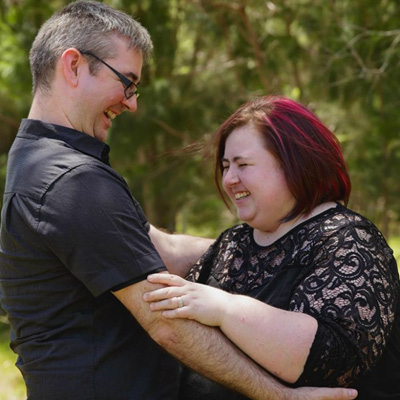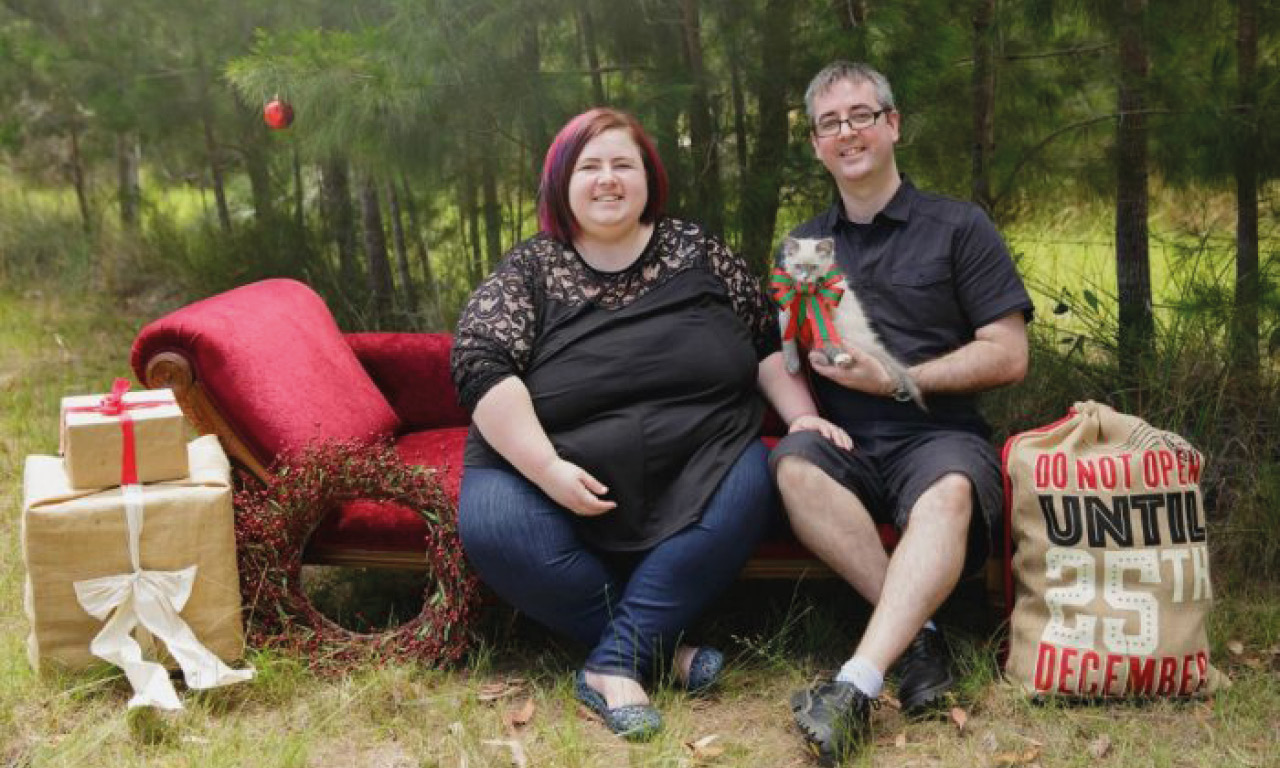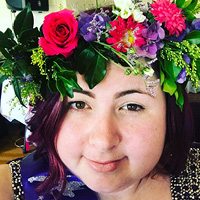I always thought by 25 I’d be married, with a house, a family and a successful career. Pretty normal life goals. At 21, I had no idea what an ostomy was—why would I need to?
Still, I knew my chances of getting bowel cancer were very high, thanks to a rare genetic condition called familial adenomatous polyposis or Gardener’s syndrome. I’d even lost my dad to the same cancer earlier that year; he was 41. So I tried to go for regular surveillance to make sure anything was caught early.
Youth
Unfortunately, when the cancer came, it was in a particularly aggressive, early-onset form, and I was forced into a difficult decision on how to save my life. I dreaded the thought of life with a permanent ileostomy. My fear that my life as a young woman would be over was compounded by the fact that all the information I found seemed to be aimed at people living out their golden years. I didn’t feel able to engage with local support groups when I realised I was a third of the age of everyone else. I felt alone and isolated.
However, this got me thinking that I surely wasn’t the only young person struggling with the same situation. So I vowed to share the successes and setbacks in my journey, and I started a blog called Feeling Ostomistic. For this to be useful and relatable to others, it needed to be honest and free of too much sugar coating.
Friendship
It didn’t take long before readers were getting in touch and thanking me for the tips that I shared, often things they hadn’t thought of trying yet themselves. As word of mouth grew, more and more young people were finding their way to my blog, as well as the chat sessions we were running. It felt like I was making a really positive contribution to the community of young people with a stoma.
A reader told me of a young woman lying beside her in hospital. She was recovering from stoma surgery due to stage-4 bowel cancer, and she was struggling with both the physical management of her stoma and with feelings of social isolation. She didn’t know anyone her age going through what she was.
Luckily, the reader had then told the young woman about my blog. She reached out to me through this link, and since we have become dearest friends. I felt empowered to know I could change someone’s life for the better.

Writing
Speaking to the people I met over the blog, we felt we could do more if we put our different skills and experiences together. Instead of just running ‘competing’ blogs, we decided to work on a trove of relatable insight and information. We wanted to make a magazine, The Ostomistic Life, which would be aimed at all ostomates, but especially younger women.
As we didn’t have the resources available for a physical magazine, the logical solution was to create an e-zine—a digital online magazine. No overheads and digital distribution meant we could make it free to access and available to people all around the world.
It was soon after we came up with the idea that I learned I would be undergoing 12 months of weekly chemotherapy. I made the decision to hold off publication until I had the energy and mental space to dedicate all the love this project deserved. Eventually, the first issue of The Ostomistic Life was launched in February 2017, and it was very well received by all.
Although having an ostomy has sometimes been daunting and unpleasant, I am proud to leave this ezine as a legacy of this time. I hope it might serve as a light to other young ostomates.
Illness
For many ostomates, having an ostomy allows them to go on living as before, only with a stoma to take care of. However, the cancer I was diagnosed with 5 years ago is terminal. My stoma, although it has been complex and rather difficult at times, has given me a few more years, for which I am really grateful.
My first ileostomy, which I received 4 years ago, was amazing. There was rarely a problem, and I could go 7–10 days between bag changes. I was confident, happy and active.
Unfortunately, the cancer grew under my stoma and damaged it, which meant that, when the tumour was removed, I had to have a new stoma formed as well. This new stoma is very problematic; the cancer caused it to become retracted 5–10 cm under my skin, looking like a belly button. It was quite painful for months and it still leaks a lot—up to 20 times on bad days. It can’t be refashioned, so I’m having to learn to live with it.

Connection
This has affected my confidence, social life and ability to do everything I used to do. I have been mostly housebound since March 2016, which can be very isolating. However, I am grateful to the online community I have found though blogging and social networks. Not only can I share my story as it has happened, I can connect with likeminded people who understand my frustration and loneliness.
My stoma care nurse has helped me through. As important as her help in finding the best products to minimise discomfort and leaking, she has also listened to and felt my felt my tears and frustration. I couldn’t have done this without her.

Conclusion
I have found that when you are facing complex issues with no easy solutions, it is worth writing about them. There are likely to be other people in a desperate situation who are seeking out lived experiences and answers. I know I was often that person myself, and it felt like a struggle to find anyone who understood.
I am just living life one day at a time. Although it can be a rather lonely place, I hope I can help at least one person through sharing my journey with the world. I hope that, long after I am gone, my advice and the legacy of my blog and magazine can live on and continue to inspire, empower and educate. I can leave this world feeling ostomistic.
 Talya Goding lives in Australia and has been an ostomate since 2013; she started the magazine An Ostomistic Life and blogs at Feeling Ostomistic
Talya Goding lives in Australia and has been an ostomate since 2013; she started the magazine An Ostomistic Life and blogs at Feeling Ostomistic
The contents of this page are property of MA Healthcare and should not be reused without permission

